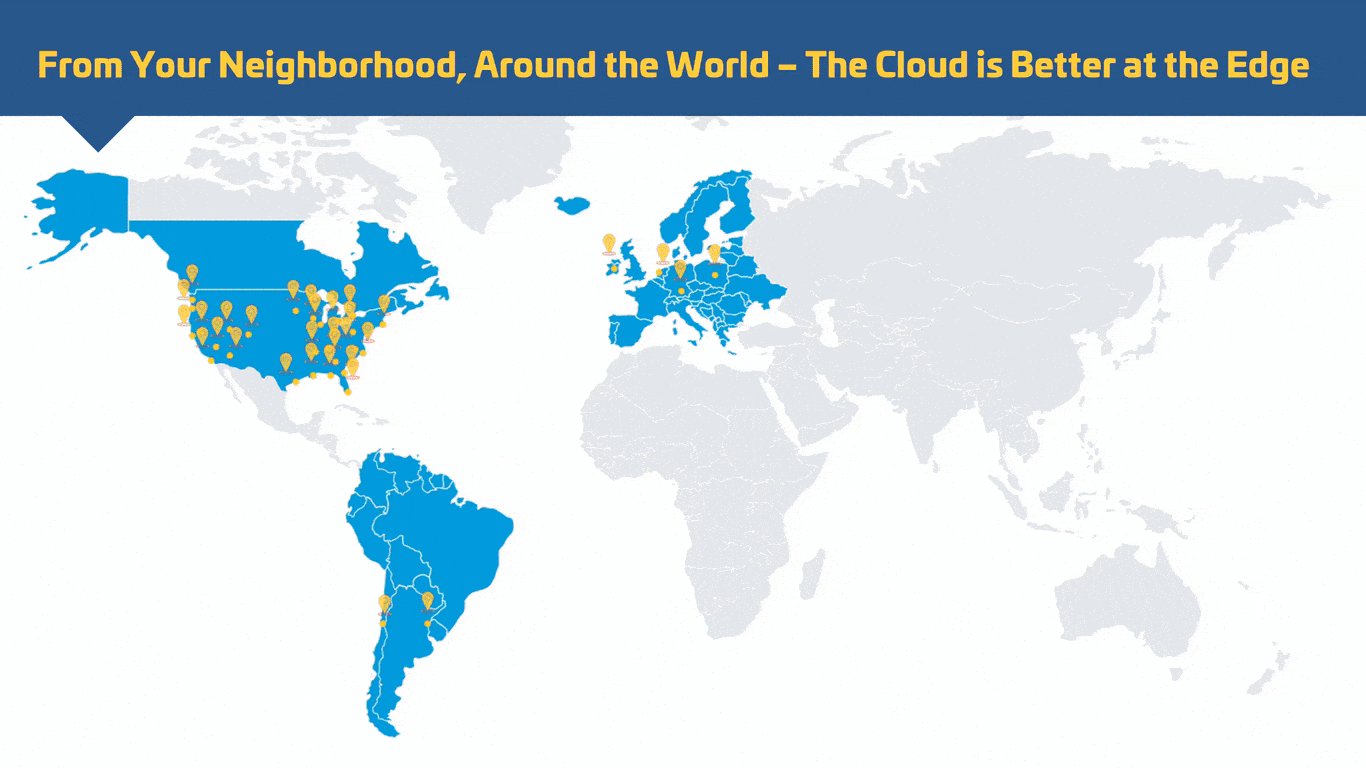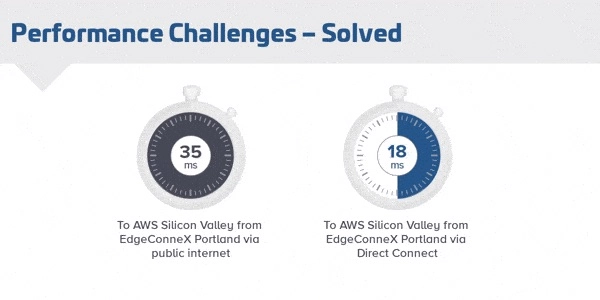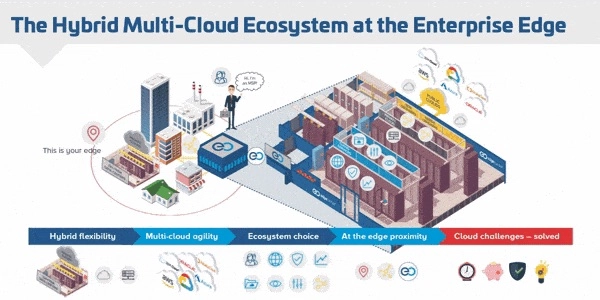The Cloud is Better at the Edge.
A hybrid multi-cloud ecosystem at the edge enables enterprises to overcome tough cloud challenges and deliver the kind of digital experiences that keep them on the competitive edge.
That’s the premise of our newest interactive EdgeBook, The Cloud is Better at the Edge. You can get the highlights here, but check out the full animated version as well.

“The cloud is better at the enterprise edge.” Click to Tweet
Enterprises need the cloud, but there are challenges
For every kind of enterprise, the key to winning in the digital age is moving fast to be the first to market and staying agile to take advantage of new technologies like AI and IoT. The process of getting there is digital transformation – what CIO magazine defines as “an aggregation of modern tools and processes leveraged to solve business problems and satisfy customers.”
Cloud is one of the most important of those modern tools and processes. Yet traditional cloud architecture poses tough challenges for CIOs – including performance, cost, security, and expertise challenges. They’re the reasons 62% of cloud migration projects are reported as “very difficult” or “failing.”
“62% of cloud migration projects are reported as ‘very difficult’ or ‘failing.’” Click to Tweet
These challenges can be solved by a hybrid multi-cloud ecosystem at the edge
A hybrid multi-cloud ecosystem at the edge provides:
– Flexibility – to run some workloads on-premises, some in private cloud, and some in public clouds
– Agility – to choose the right cloud, for the right workload, in the right market
– Choice – best-of-breed providers to help optimize the cloud journey with integrated cloud solutions
– Proximity – a hybrid multi-cloud ecosystem can yield optimal low latency performance and cost savings benefits
With flexibility, agility, choice, and proximity, enterprise IT leaders can overcome cloud challenges to realize their digital transformation goals – and win.
“A hybrid multi-cloud ecosystem at the edge provides flexibility, agility, choice, and proximity.” Click to Tweet
Performance challenges – solved
Latency matters for enterprises, but it’s not as easy as it once was. Today’s internet infrastructure struggles to consistently deliver low latency regardless of location. A local cloud – at the enterprise edge – provides the best of both worlds: low latency access to public and private clouds.
EdgeConneX cloud gateway data centers enable these benefits through peering at the edge and by providing local and secure access to leading cloud services through cloud on-ramps.
Cost challenges – solved
Cost challenges in the cloud come from broadly two places: First, the inherent flexibility of the cloud means it’s much easier for cloud spend to get out of control. In fact, 35% (or more!) of enterprises’ cloud spend, on average, is wasted, according to the Flexera 2020 State of the Cloud Survey. Second, network costs associated with backhauling data from the enterprise edge to the public cloud are by far the biggest share of total costs.
A hybrid multi-cloud ecosystem at the edge helps enterprise CIOs overcome those cost challenges:
– 91% total cost savings associated with a hybrid cloud approach, versus only public cloud
– Multi-cloud saves money by optimizing the cloud provider for the workload
– Expertise from an MSP in the ecosystem ensures an optimized and economical solution
– By reducing the distance from the enterprise edge to the public cloud, network transport costs can be nearly eliminated
Could a hybrid multi-cloud ecosystem at your edge help you dramatically reduce cloud costs? Take the assessment to find out.
Security challenges – solved
The cloud itself is not inherently less secure that on-premises deployments. In fact, cloud providers invest much more in security than most enterprises could ever afford to.
But there are, nonetheless, security challenges that arise from the nature of how enterprises deploy into the cloud – including challenges stemming from backhauling data over the public internet, shadow IT within the organization, application mis-configuration, and weak governance.
CIOs solve these security challenges with:
– The flexibility in a hybrid cloud model allows IT leaders to choose the right place for each workload
– Ecosystem partners including managed services providers with dedicated security teams focused on cloud security
– A local cloud gateway at the edge enables cloud access via a dedicated private connection more secure than the public Internet
Expertise challenges – solved
Most enterprises report significant challenges attracting and retaining in-house cloud expertise. There’s a shortage of those experts, and most go to work for the cloud providers.
The result is significant: a two-year or longer delay in cloud migration for many enterprises. Solving those challenges is really all about having a trusted advisor that can tailor a unique solution to the enterprise’s specific needs. Leveraging a cloud managed service provider (MSP) enables enterprises to efficiently and effectively migrate to the cloud.
In the interactive EdgeBook, dive into the various components of the hybrid multi-cloud ecosystem at the edge and get lots more detail on how flexibility, agility, choice, and proximity help CIOs overcome the cloud challenges to achieve their digital transformation goals – and win. Get the EdgeBook.
For Additional Resources, Visit the Hybrid Multi-Cloud Ecosystem at the Edge Content Hub:
1. Explore the Ecosystem at Your Edge (infographic)
2. Do You Need a Hybrid Multi-Cloud Ecosystem at the Edge? (quick assessment)
3. The Cloud is Better at the Enterprise Edge (interactive EdgeBook)


